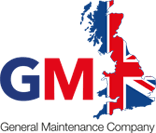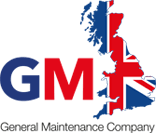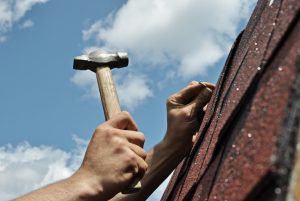Structural damage to a property can decrease the value of your property portfolio and affect the safety of your tenants. Keeping in control of property maintenance will help prevent property damage and protect your investment. Our latest blog shares information on how to identify issues which could lead to long-lasting structural property damage.
Causes of structural damage
Damp properties and leaking roofs
Prevention is always better than cure when it comes to damp. Wet and crumbly plaster, damp and blotchy patches on the wall and the presence of fungus or mildew on walls and ceilings are all signs that could lead to structural damage Often in tenanted properties the occupants will notify the landlord of any damp issues, and in order to protect your investment the source of the damp must be identified and dealt with as quickly as possible.
A number of common causes of damp are easily dealt with providing they are done so proactively. Roof repairs are an essential part of property maintenance, as loose or missing roof tiles can cause water to seep in. Replacing loose tiles before leaks cause structural issues is much more cost effective than replacing rotten roof timbers. Other potential sources of damp include faulty roofing or rooftop moss which retains moisture. Leaking downpipes and misaligned guttering and overflowing gutters should also be looked at. Remember to clear gutters in autumn and spring and carry out essential repair work. Internally ensure tenants are allowing adequate ventilation when showering and drying wet clothes indoors. Consider fitting extractor fans to bathrooms to help with condensation.
Rising damp
Rising damp is moisture present in your walls as a result of water in the ground underneath or next to your walls rising up through the fabric of the wall, whether it be brick, block or stone. The water travels upwards through the wall as a result of capillary action (where water is sucked through a small opening such as a tube or hole) through the tiny holes in the brick or stone. The water stops rising at a height where gravity counteracts the upward force of the capillary action. This “rising damp” usually reaches a maximum height of 1.2m, but the effects of the damp, such as salt deposits, may be seen higher up due to presence of non-breathing wall coverings such as vinyl wallpaper and non-breathing plasters, renders and paints. Once a specialist has determined the cause of the problem (often the absence of a damp proof course), steps can be taken to address the affected areas. GMC can provide damp specialist reports and carry out any remedial works required.
Structural damage caused by tree roots
There are several varieties of popular trees that can cause damage to a property if left to get out of hand. For example, the roots of the Weeping Willow can spread out from the trunk up to three times the distance between the edge of the tree’s foliage and its trunk. Weeping willows typically produce foliage that is between 15m and 25m wide at maturity with roots that can spread approximately 30m from the centre of the trunk of large specimens. As with a number of invasive plants and overgrown tree roots regular garden maintenance will help you be proactive even if your property portfolio is too vast for you to visit each property individually. The gardeners contracted by GMC will be able to identify areas which require specialist attention. We can then organise specialist tree reports carried out by a consultant member of the Arboricultural Association.
Woodworm
Woodworm season is from May to September, and the signs of woodworm can be identified by the round or oval shaped exit holes which they leave in timber, crumbling or weakened wood and the presence of woodworm larvae and beetles. If left untreated woodworm can seriously weaken the timber of a property, causing structural damage. It is essential that any signs of woodworm are assessed by experienced surveyors, and that action is taken to remedy the problem. Here at GMC we have a network of UK wide property contractors and are able to carry out full property inspections when it comes to woodworm, damp problems or any other structural issues. We can also ensure that any recommended treatments and timber replacements are carried out efficiently without requiring the presence of the Landlord.
Japanese Knotweed
Costing the UK economy approximately £166 million per year in property devaluations and treatments, this virulent plant must be treated if found on your property. It is an offence to allow Japanese Knotweed (Fallopia Japonica) to spread.. Due to the nature of Japanese Knotweed it is important to be able to identify the plant, If you are aware of Japanese Knotweed on your property it is recommended that you put a barrier in place to prevent it from encroaching onto neighbouring properties. You should also make the owners of any neighbouring properties aware that you have Japanese Knotweed and keep them informed of any treatment you have planned.
This invasive plant can grow up to 3 metres tall and produces thick and extensive roots known as rhizomes. When the roots of a Japanese Knotweed plant grow and expand they will exploit any weaknesses or cracks that a property has, which can result in severe structural damage. The plant can grow through tarmac and concrete. Additionally, in search for moisture Japanese Knotweed roots have also been known to interfere with piping, causing blockages and damage to underground water pipes and cables. It takes just 0.8mm of root for a new plant to grow so extra precautions must be taken when the plant is removed from a property as failing to dispose of it correctly may lead to prosecution. It is essential that no soil is spread within a 10 metre radius of the plant as the root system of a Japanese Knotweed can grow up to 7m from the infected site.
Preventing damage from Japanese Knotweed
Alongside issues such as damp and structural defects, property surveyors will take into account Japanese Knotweed damage into their assessment of a property. Once a potentially hazardous plant has been identified you will need an expert to implement a Japanese Knotweed management plan in order to prevent any further property damage. If you intend to purchase or sell an affected property do not undertake a Japanese Knotweed treatment plan which cannot be guaranteed, as mortgage lenders or potential investors will need the assurance that the problem is under control. It is classed as controlled waste under the Government’s Environmental Protection Act 1990 and can only be disposed of at licenced landfill sites.
Here at GMC we can implement a Japanese Knotweed Management plan and provide an insurance backed guarantee, this will give you peace of mind that the problem is being dealt with, your investment is safe and provide you with the documentation that most mortgage lenders require.
With GMC your properties are in safe hands
If you manage a large property portfolio staying on top of individual property maintenance requirements can be challenging. At GMC we can help ensure your property is an asset, not a liability. Our regular cleaning, gardening service and maintenance teams will be your extra eyes and ears, informing us of any issues which may affect the value of your properties. For extra peace of mind, we also offer regular property inspections for untenanted void properties helping you ensure your investment stays safe.
To find out about the extent of our services and how we can help you with your property portfolio please call our team on 01903 721020 or email info@genmaint.co.uk

 Welcome To The General Maintenance Company
Welcome To The General Maintenance Company




Sorry, the comment form is closed at this time.